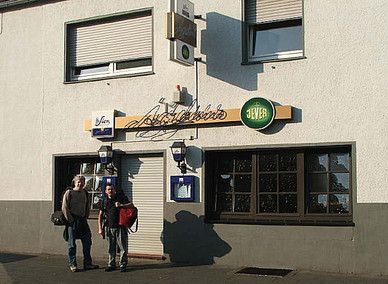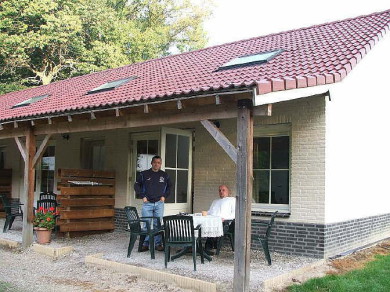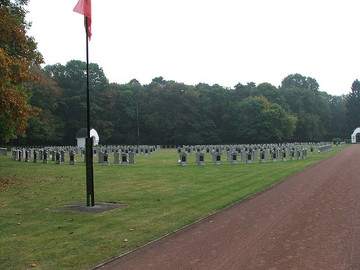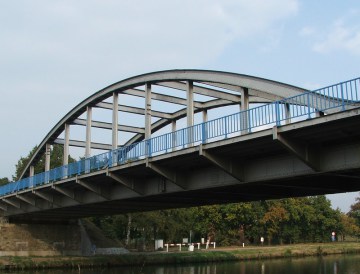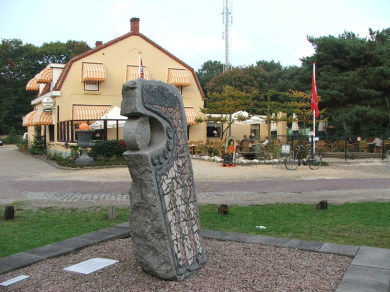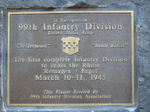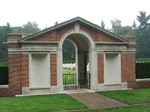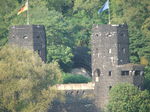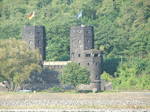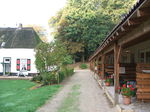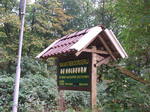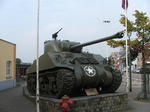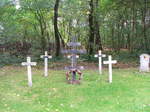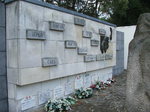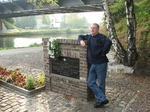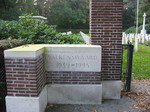
Market Garden 2005
Where do we start with our trip to The
Netherlands and Germany?
Well first, Lance was back
after his break to do his Law Degree.
But Stuart could not make it, maybe the fear of Formule 1’s or sleeping in fields was it, but he could not come.
First of all we flew via Air Berlin, which was a reasonably good airline and quite cheap at the time a quick check of the site and it seems less budget airline in 2013, also in 2013 Manchester does
fewer routes. The problem was that we originally booked to fly to Düsseldorf. We intended to stay the first night in Germany and booked a hotel in Düsseldorf.
Then a few weeks before we were due to fly Air Berlin said that they were no longer flying to Düsseldorf, but we were off to Köln (Cologne). Hence we had to faff about with hotels and find a hotel in
Köln, cancel the Düsseldorf one. I was not happy with this and wrote a letter to Air Berlin. It did the trick they knocked a third off the air-fair.
Earlier in the year, Kevin had decided to take
the trip to
Germany via Paris. So he got the coach down,
usually around this time on year Kevin bangs on about getting his moped down, but the Eurolines coach beckoned.
This was a huge mistake as the trip on the coach was long and a nightmare. The trip to Paris was cancelled due to lack of funds, so he went direct to Germany all the way by coach. So a bleary eyed
Kevin arrived at Köln half a day before Lance, Gerry and I.
The lodgings that first night were the splendid Hotel Sportzentrum, on the Wilhelm-Ruppert-Strasse
in
Köln.
These lodgings we really quite good and we would recommend them as a short stay place.
Hours later a reunion of the NMBS happened at Köln airport and we went back to the lodgings.
We soon showered and changed and found a nice German bar - This pub saw us right for our first night out. We were all starving and despite the kitchen being closed, the landlady or Grundeigentümerin
rustled up some goulash and bread. It is called Ägidiust's and it is on Sankt Ägidius Straße and thoroughly recommended. All of us wish to thank the landlady for her kindness and the pity
that she took on us.
After a small glass of wine to accompany our goulash we headed back to the lodgings for some rest as we had a long and busy day ahead. The idea was to go to the Gite via Remagen and the
infamous bridge.
The next Morning we headed off to The Netherlands and Berg en Darl, (where we were going to stay on the trip a quaint little village near Nijmegan (we nicknamed the gaff "The Ponderosa" on the account it looked like a cowboy homestead)
The Ponderosa was fine and acceptable, but if you looked at the website
www.holdeurn.com
it looked massive, but really it was two small bedrooms and a small living room/kitchen. It was okay. It did the job, would have been a squeeze if Stuart had come. Oddly enough in one of the other
chalets was used by a Dutch Porn shoot. Who said our trips were not without adventure? But to be honest we were too tired to bat an eyelid.
The Ponderosa was on a farm, so the bonus was we bought a tray of two dozen eggs for a few Euros. The main factor was paper thin walls, Kevin and I had to endure nights of duel snoring from the other
room. Before we got to the Ponderosa we made a detour to visit Remagen.
The
Ludendorff Bridge
was originally built during
World War I
as a means of moving troops and logistics west over the Rhine to reinforce the
Western Front.
The bridge was designed by Karl Wiener, an architect from
Mannheim.
It was 325 metres (1,066 ft) long, had a clearance of 14.8 metres (49 ft) above the normal water level of the Rhine, and its highest point measured 29.25 metres (96.0 ft). The bridge carried two
railway tracks and a pedestrian walkway. During
World War II,
one track was planked over to allow vehicular traffic. The
Ludendorff Bridge
at Remagen (see pictures in gallery) —the last standing on the Rhine—was captured by soldiers of the
U.S. 9th Armored Division
on 7 March 1945, during
Operation Lumberjack.
On 7 March 1945, soldiers of the 27th Armored Infantry Battalion, led by Lieutenant
Karl H. Timmermann,
from
West Point, Nebraska,
approached the bridge, and found it standing. The first American soldier across the bridge was Sergeant Alex Drabik; Lt. Timmermann was the first officer across.
There is a museum housed in the towers of the. It opened in 1980 and tells the story of the bridge and the prison camp, "Golden Mile."
By the time we got to the Ponderosa it was getting late, so I made a large Spaghetti Bolognese and we settled in what was going to be our home for the week, Kevin and I cursing the snoring later that
billowed from the bedroom next door. One sounded like Thor gargling with chainsaws, the other sounded like a wildebeest with a heavy mucus cold.
It was a long, busy and straight-forward tour. We followed the route that the advancing Allied army took, starting at Leopoldsburg on the Belgium / Netherlands border and we would end at
Arnhem.
By September 1944 the war against the Nazi's looked won. France had been liberated after the D-Day landing in June 1944 and Belgium was being liberated to a line at Antwerp by Field Marshal Bernard
Montgomery. The Allies had important ports such as Antwerp, but the Nazi's still held important ports like Dunkirk.
Since D-Day supply lines from Normandy were being stretched. The main leaders on the realised that a new attack was needed on the regrouping Nazi's and Montgomery had an idea. Operation Market
Garden.
Market
-
meaning the airborne forces of General Brereton's 1st airborne to seize the bridge and other key terrain under the command of General Browning and
Garden -
Ground Forces from the British 2nd army XXX Corps under the command of Lt Gen Brian Horrocks to move North.
The idea was simple to drop airborne troops by parachute around the Key Bridges are Arnhem, Son, Best, Nijmegan, Eindhoven, Grave and the rail bridge at Oosterbeek.
These bridges formed the basis for the our trip and it is believed that the capture of these bridges would make the war end by December 1944, the failure of Market Garden kept the war going to May
1945 in Europe. What happened, particularly at Arnhem is basically the biggest balls up since the Somme.
But unlike the Somme with the waste and stupidity of war, the Allies faced bad luck, poor planning, good information not being acted on and weather. Otherwise Market Garden would have been an amazing victory.
The first port of call was the rough start of “N69” and we visited Leopoldsburg War Cemetery which has burials for British from the start of the war in 1940, there are a number of other nations
including Poles and Dutch and next to it is a large Belgium cemetery. We started the trip up the road at “Joe’s bridge”.
Joe's Bridge is the nickname given to Bridge No.9 on the
Maas
-
Scheldt
Canal outside the town of Neerpelt, near the Belgian city of
Lommel
just south of the Belgian-Dutch border. The bridge was captured by British troops in September 1944, becoming the springboard for the ground offensive of
Operation
The original bridge had been destroyed by the Belgian Army in 1940, but the Germans had constructed a wooden
Pontoon bridge
to the west of it. This bridge was taken on the evening of 10 September 1944 by the
Irish Guards
under the command of Lieutenant-Colonel John Ormsby Evelyn 'JOE' Vandeleur, hence JOE’s bridge. In the fil "A Bridge too far" he is played by Michael Caine.
On the afternoon of 17 September 1944
XXX Corps
began its advance north along the N69 (known as "Hell's Highway" to the American paratroops and "The Club Route" to the British), with tanks of 2nd Irish Guards leading. A heavy bombardment had been
made on known enemy positions, but information was sketchy and numerous elements of the German battle group survived, including SS and
Fallschirmjäger
troops.
The Germans allowed the British Tanks to advance along the road while they waited for the lead elements to move adjacent to them hidden as they were in the wooded areas to the left of the road. They
then opened up with
anti-tank guns
knocked out seven lead tanks, so
Lieutenant–Colonel Vandeleur,
called in airstrikes from
rocket-firing
Typhoons.
This silenced the guns, and the road was cleared of wreckage by armoured bulldozers, while infantry mopped up, thus setting a pattern for the rest of the advance towards
Valkenswaard and
Eindhoven.
We also visited as we were in the area the Polish Cemetery at Lommel, which
is stark but beautifully poignant. The wall at the back of the cemetery lists where the Poles fought in Belgium. Going up the N69 we stopped of for a small cake and a coffee at the Cafe Heertje on
the Belgium / Dutch border, opposite is the liberation monument in Valkenswaard. It is an abstract
sculpture of granite. Op de achterzijde is een mozaïek aangebracht. The monument was placed opposite
to the pancake house where we had the cake and the coffee by the local family called Suykerbuyck who owned the Pancake house. At the time of the war the cafe was known as the Cafe
Rustoord.
The Text on the plaque reads "On this spot the British liberators set foot on Dutch soil for the first time. This statue
is a tribute to our liberators and a remembrance of their first contact with the people of Valkenswaard."
Just a little futher up the N69 is Valkenswaard CWGC. Valkenswaard was the first village to be liberated on the main line of the British advance into Holland in September 1944.
The cemetery, which lies in a pinewood, contains over 220 graves; almost all of them are those of men who fell in the fighting in the woods around Valkenswaard during that month. All the men buried
here belonged to the forces of the United Kingdom. It is right on the N69 and there is a smalll parking layby at the front, but if you are driving you could miss it, so make sure you keep your eyes
peeled. You can see at picture in the gallery (Number 1, below)

